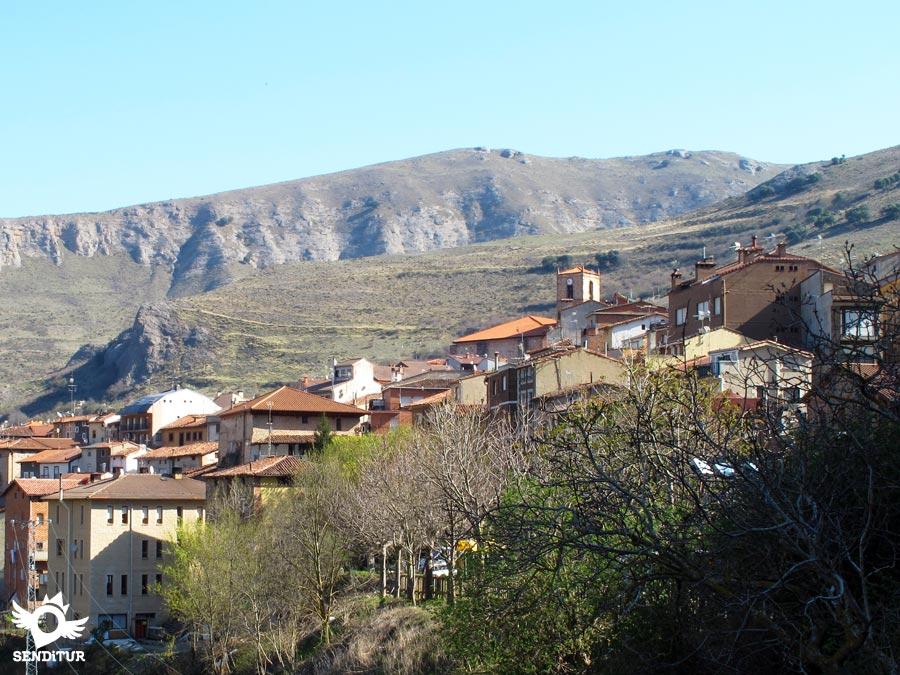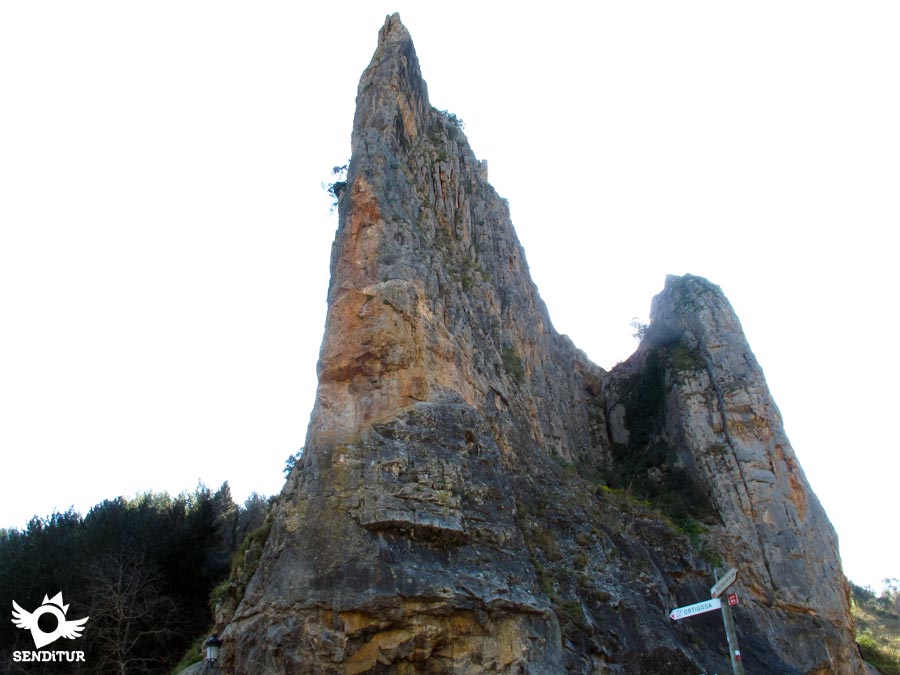It is located on the eastern slope of the Sierra de Cameros, on the banks of the river Najerilla, at the foot of some imposing and imperturbable cliffs, surrounded by mountains, forests and natural landscapes of great beauty. In the village of Anguiano there are three distinct neighbourhoods waiting for us, two on the right bank of the Najerilla, Mediavilla, which is the centre of the village, Eras and on the other side of the river is Cuevas.

In the famous Fuero de Nájera, at the beginning of the 11th century, it was named "Anguidano", whose Greek meaning would be "place of abundance of waters". With its current name, Anguiano, it appears documented in the year 1092 in a deed of cession of pastures, granted by Alfonso VI to the Monastery of Valvanera. Due to its strategic location it became, in the 10th-11th centuries, an important defensive bastion for the accesses to the Kingdom of Nájera/Pamplona. During almost three centuries that the Lordship of Anguiano lasted, it was inaugurated as such in the year 1366, passed by several Lords or owners, until in 1507 it was delivered definitively to the Monastery of Valvanera, to which, the own anguianeses bought it in the year 1662. It belonged to the province of Burgos until the creation in 1833, of the one of Logroño.
Each of its three neighbourhoods has its own charm. In Mediavilla, there is the Parish Church of San Andrés, built on top of an already existing one, between the 16th and 18th centuries, using late Gothic architecture, with the effect of a temple with a very characteristic salon floor plan and spread in other churches of La Rioja in the 16th century. The 18th century Madre de Dios Bridge, located 30 metres above the river Najerilla, has a single arch of 12 metres of light, joining the existing natural rocks on both sides of this gorge, as well as joining the districts of Mediavilla and Cuevas and is one of the most spectacular in La Rioja.

The Fuente de la Villa, near the Najerilla and the Paseo de Cuevas, was the old washing place that has now been restored. The Plaza de la Iglesia, from the 17th century, and the Cuesta de Los Danzadores, in the centre of the village that joins the church with the Plaza Mayor. In the district of Cuevas, in its upper part, is located the church of San Pedro de Cuevas, XVI century. Its location offers us an impressive panoramic view of the Najerilla and the bridge that connects the neighbourhoods of Anguiano, in short of all its surroundings. The hermitage of Santa María Magdalena, located in a beautiful spot 2 km from the village, is baroque from the 18th century. Inside, separating the main chapel from the rest of the building, there is also an 18th century grille. A separate mention should be made of the Monastery of Valvanera, which belongs to the municipality of Anguiano, but is 15 km away. The enclave of Anguiano also leaves us an endless number of activities in nature, horseback riding, climbing, forest walks, GR-93 routes, and as not hiking and mountain.

The May festivities, which are celebrated on the Sunday following Ascension Day, with the whole village taking part in a pilgrimage to the hermitage of La Magdalena, with a picnic included and in the mid-afternoon, to the sound of castanets and the dances of the Dancers, they take the Saint out of her hermitage and take her to the church of San Andrés, always preceded by the eight dancers who turn their backs to the road, without stopping their castanets and turning on themselves when the music indicates it. Here in the parish of the village it will remain until September, the last Saturday, in procession and with the same acts as in May, it is climbed back up to the hermitage where it will spend the winter. Just as in May you are prayed for the harvests, in September you are thanked for them. In these Thanksgiving festivities, the dancers do throw themselves down the Cuesta. La Magdalena is the festivity of the town's patron saint, 22 July. The festivities last approximately one week. On the 22nd and 23rd the famous descent of the Cuesta takes place, in which eight young men, dressed in regional costumes, turn and turn around on stilts about 45 cm high, along the cobbled Cuesta de los Danzadores. On 15 September, the Anguianejos organise a pilgrimage to the Monastery of Valvanera to honour the patron saint of La Rioja.

The Thursday before Palm Sunday we go up to the hermitage of La Magdalena, celebrate a mass and then eat the traditional Anguiano empanada which is nothing more and nothing less than chorizo and boiled egg on bread. On that day, they say, it was customary for young people to cut the bouquet they were going to take to bless Palm Sunday. On Easter Sunday, after Mass, a Judas, a doll made of straw and rags, is burned in the Plaza Mayor while, from the Town Hall, candies are thrown for the children. Every year, since 1999, there is a Walking March through the mountains of Anguiano. This takes place either at the end of May or at the beginning of June. On the third Sunday in November, in order to promote a typical and valued product of the village, the Anguiano Haricot festival is held. And to close the year, in a village as rich in customs and traditions as Anguiano, large bonfires are lit in the squares of the Cuevas and Mediavilla neighbourhoods, around which they gather to talk and enjoy good food. These Marches, as they are called in the village, are extinguished when there is no more firewood left to burn, being able to last for several days, depending on the amount of dead firewood collected by those in the neighbourhood.

There is a popular, traditional and ancient saying that in Anguiano there are Three neighborhoods, three bridges and three classes of people. Although it is not very clear the name of Anguiano could derive from the Euskera whose meaning would be "hill of limited pasture".
Several legends circulate around Anguiano, related to the caves and cliffs that surround it. That of the Cave of Nuño, in which a malefactor lived with his son and when the latter fell into the void from the cave, the repentant father began to pray for his son. One day he received a visit from an angel who gave him signs to look for the Virgin of Valvanera, for days he was searching through the woods and the undergrowth until he found her and together with Domingo, priest of Brieva, they took her to a nearby hermitage called the Christ. The one in Cueva Colomba, where Nuño's sister lived and who wanted to know and pray to the Virgin of Valvanera, but at that time the women were forbidden to go to the Monastery, even though she did not cease in her endeavour and one day accompanied by her brother she approached the hermitage of Christ, being already close, suddenly she became blind not being able to see the image of the Virgin.
MORE ROUTES AVAILABLE, DON'T MISS IT...
MORE PLACES AVAILABLE, DON'T MISS IT...
In the municipality of Anguiano we arrive following the LR-113 that joins Nájera with the town of Burgos, Salas de los Infantes. This same road, in Nájera, communicates with the A-12, Autovía del Camino and with the N-120 between Burgos and Logroño.
There is a wide schedule of intercity buses that connect Anguiano with both Nájera and Logroño.
SENDITUR is not responsible for any variation in the information described, as well as for the misuse of its guides and recommends that everyone be responsible and prudent in carrying out the activity. Likewise, we invite you to document yourself with books and specialized guides to complement the information described. From the commitment of SENDITUR with Nature and the respect to the balance of the environment, SENDITUR urges you to travel in a responsible way, with low environmental impact and respecting at all times the Natural, Cultural and Social environment wherever you go. For any suggestion, SENDITUR invites you to send an email to .
Continue watching …